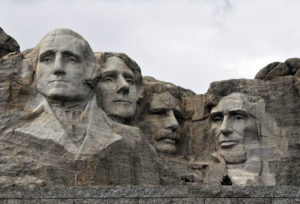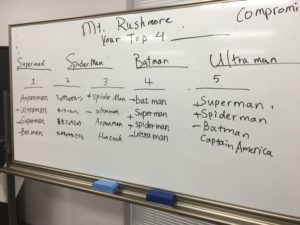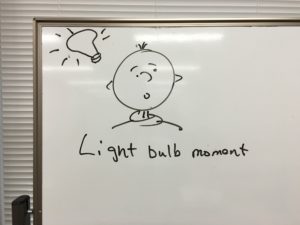Here is an exercise I’ve used in my Advanced Discussion Class.
I call it the Mt. Rushmore.
I try to use topics that are still debatable and where students aren’t afraid to be wrong. This is a really good fit for that kind of activity.
First we talk about Mt. Rushmore and a little of its history, what it represents and who is there.
Then I put the class into groups, usually of about 4 members each, and then I give them a topic/category and ask them to decide who would be on their Mt. Rushmore of ________
My class usually will have around 5 teams, so it’s enough to get a broad sample.
We started out with the Mt. Rushmore of Super Heroes.
This is fun, everyone can contribute and usually the top 2 or 3 are easily chosen
I give each group a few minutes to discuss who they believe should be on the monument to commemorate the greatest super heroes of all time.
Then each team goes to the whiteboard and puts up their list.
It looks something like this at first:
The Mt Rushmore of ___(category)_________
___________ ____________ ___________ ___________
1 2 3 4 5
______ ________ ________ ________ ________
After each team shares their list, we count the votes for the top ones. Then if there isn’t a clear winner, they have to vote again on the next choice – so the discussion can continue.
Here’s a photo of the whiteboard after Super Heroes had been decided:
You can do this with a wide variety of topics. We also did Romantic movies, which was fun, brought out a lot of discussion about what is a romantic movie and which movies really fit that category. (Guys, a hint: Not Star Wars ;-))
You have to keep the groups focused on what they’re doing and getting feedback and sharing it with the class helps with that, but it’s a great exercise, lots of talking, fun, engaging, and often has the students leaving the room still debating the choices.


